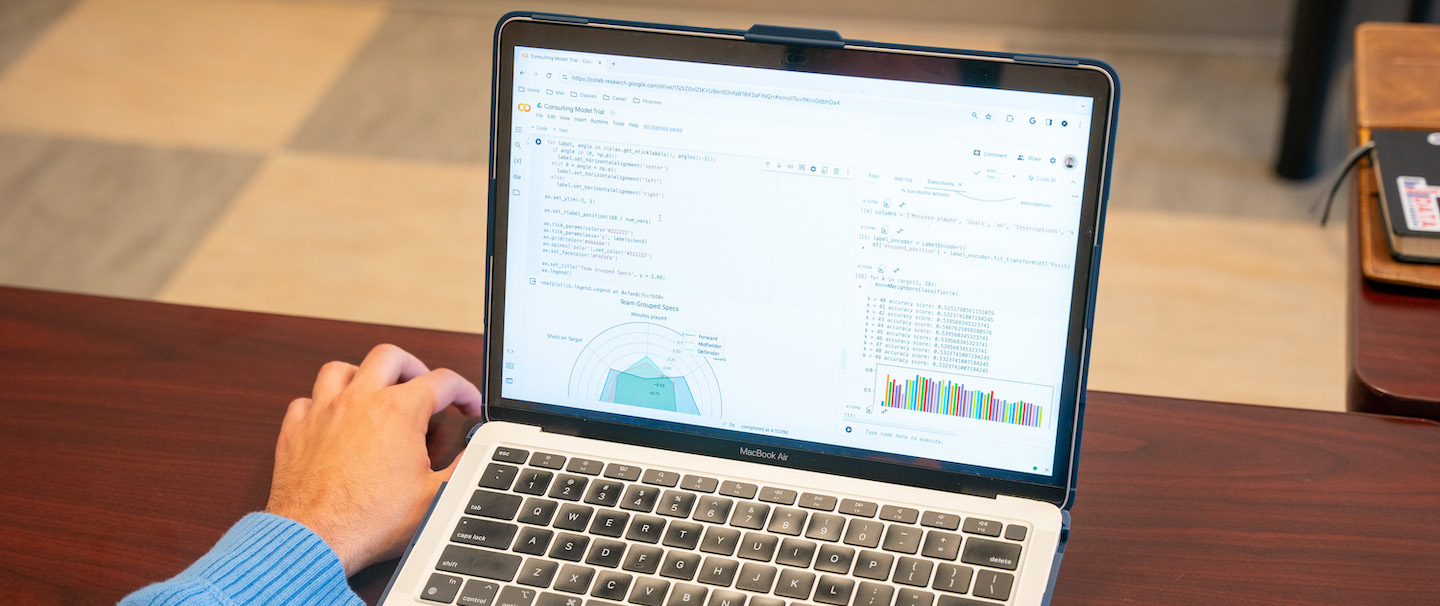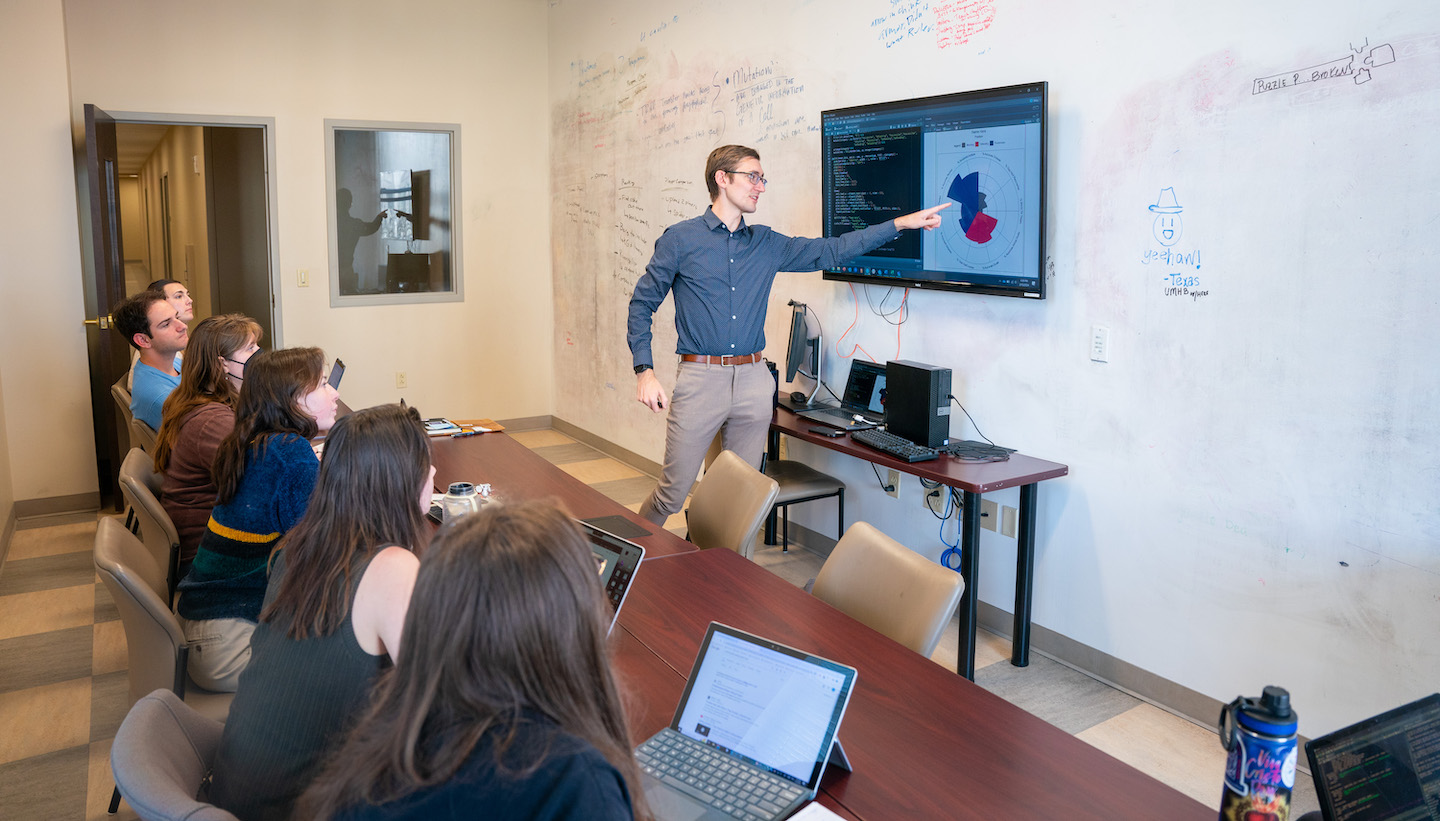 In an innovative collaboration between academia and athletics, Assistant Professor of Statistics Dr. Will Best’s statistical consulting class is taking on a real-world client this semester, closer to home than most: the Belmont Men’s Soccer team.
In an innovative collaboration between academia and athletics, Assistant Professor of Statistics Dr. Will Best’s statistical consulting class is taking on a real-world client this semester, closer to home than most: the Belmont Men’s Soccer team.
For years, the team has been using a program called Wyscout, which offers comprehensive game recordings, player footage and a treasure trove of data on players across the world.
A new website, developed by the students, will streamline the Bruins’ recruitment process by allowing coaches to upload player data from Wyscout and generate comprehensive visual reports. These reports will not only profile individual players with an overall score but also allow for easy comparison between prospects, significantly enhancing the team’s recruitment strategy in identifying promising talent more swiftly.
“We realized there was an opportunity to give our students real world experience while helping us with a more efficient way to rate and filter through transfer players,” explained Men’s Soccer Head Coach David Costa.
“There’s still the eye test, of course, where we need to watch the players play,” Costa added, “but this can help us not miss out on players that maybe we wouldn’t have known about by having an actual rating that lines up with the things that are most important to us.”
Real World Application
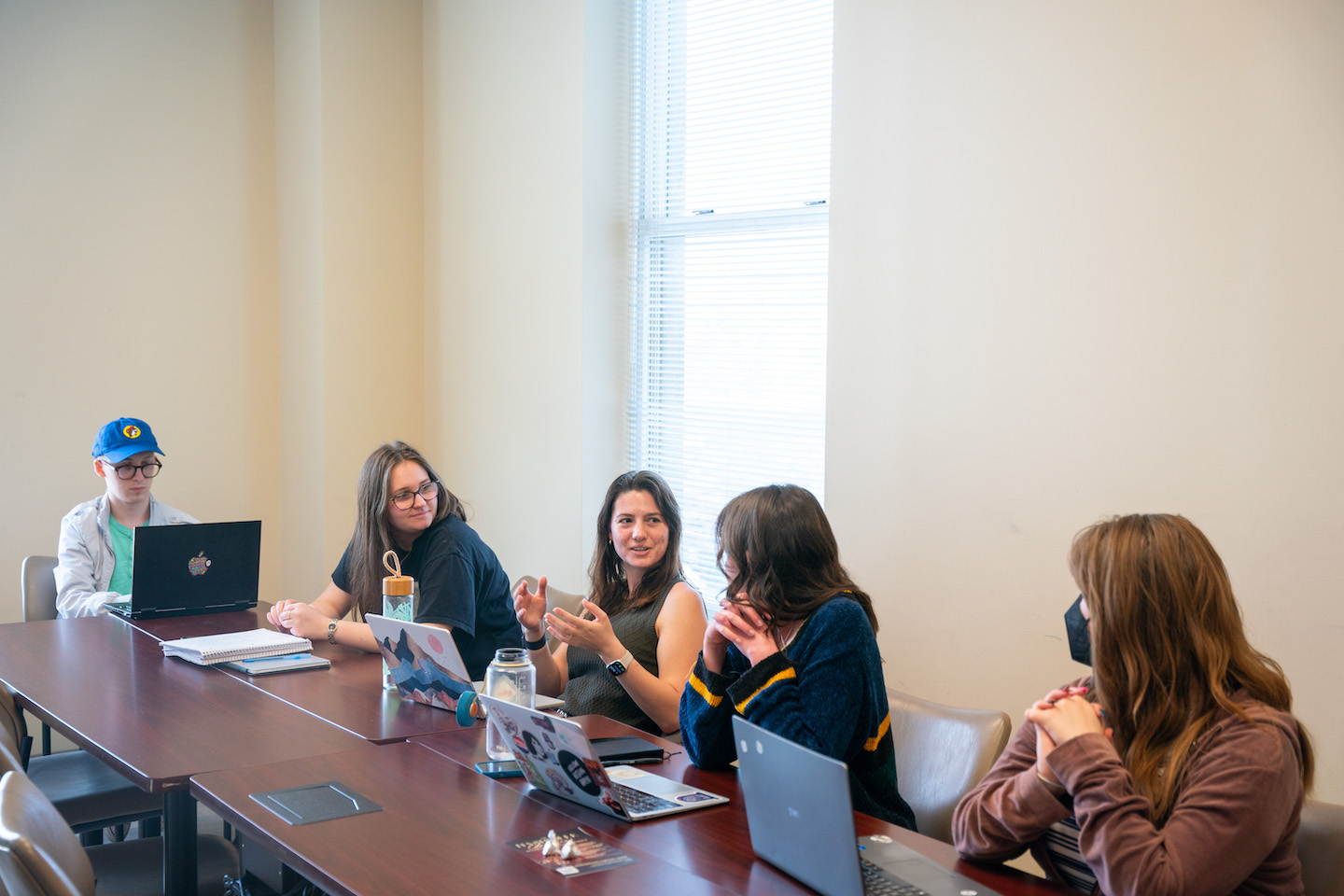 Best always has his class tackle a hands-on project for a nonprofit or community partner, but this collaboration seems to be the one the students have been most excited to work on.
Best always has his class tackle a hands-on project for a nonprofit or community partner, but this collaboration seems to be the one the students have been most excited to work on.
"Anything with soccer, or sports in general, is super flashy,” Best said. “Every student who has graduated from the program says they have talked about former projects in interviews. Real world experience is something that everyone asks about. And when you throw something fun like soccer on your resume, even more people ask about it.”
Comprising an interdisciplinary group of students from data science, accounting, business and music business, the class embodies the spirit of real-world learning. Because the group is so small, it makes the learning more individualized.
Junior data science major Katherine Aebi enrolled in the class to gain experience working on a data project within a team environment and working with a real client. She’s enjoyed practicing her ability to be flexible to suit the clients’ needs while applying statistical models learned from other classes in a more creative way.
“This project has been very open-ended in certain aspects that have challenged me to think through my approach to problems more deeply,” Aebi said. “This isn't a class where I can pound out the homework in under an hour. This is the application of what I know with minimal rules or guidelines, and I think that freedom has been necessary for developing the professional skills that Dr. Best wants us to take away from the experience.”
Learning Outcomes
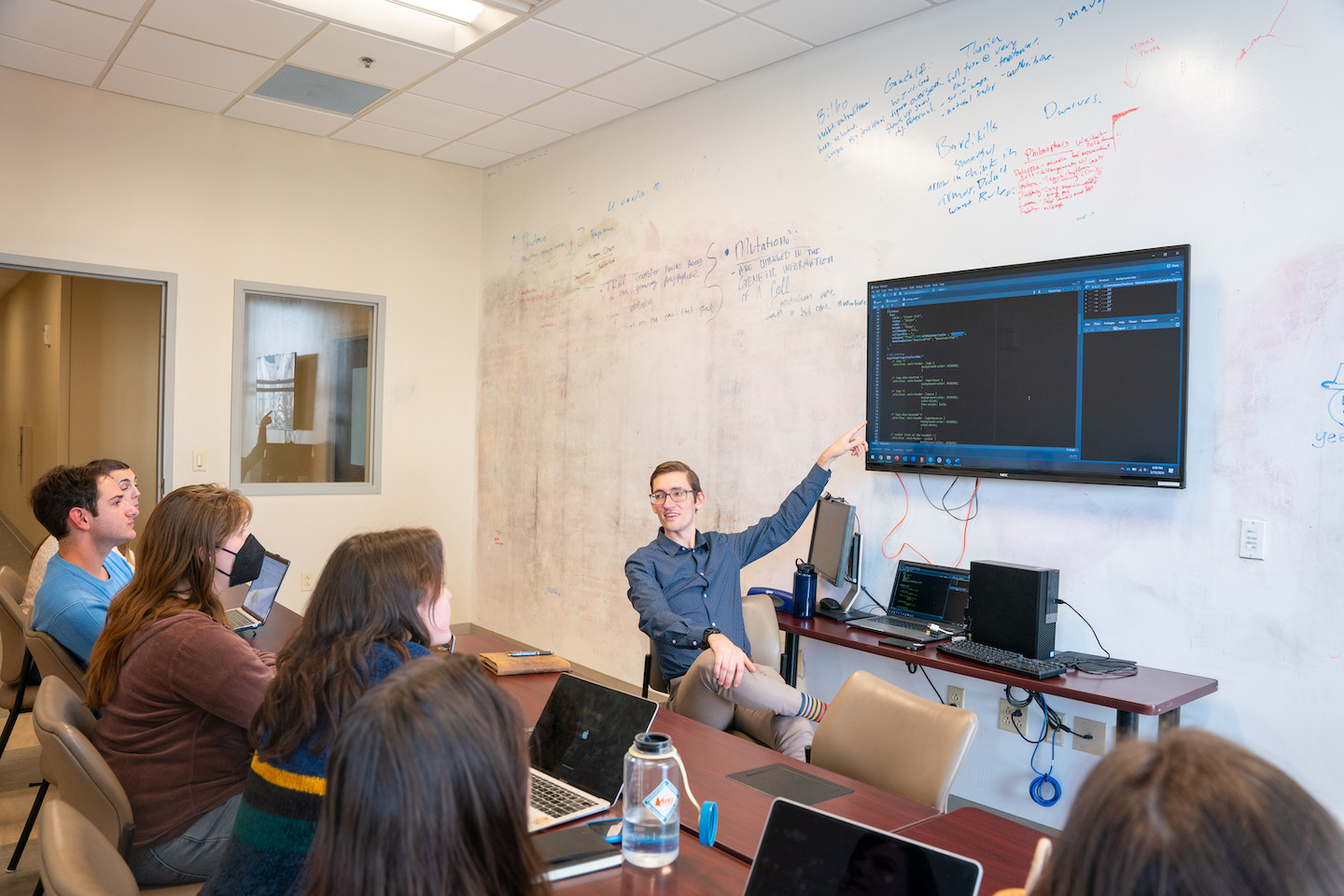 This class highlights the practical applications of data science, opening doors to new ways of thinking about sports performance and talent acquisition. As the project progresses, insights from the soccer coach and students will both enrich the team’s strategy and the students’ learning outcomes.
This class highlights the practical applications of data science, opening doors to new ways of thinking about sports performance and talent acquisition. As the project progresses, insights from the soccer coach and students will both enrich the team’s strategy and the students’ learning outcomes.
Adult degree student Victoria Crawford is excited about the assignment because its real-world implications force her and her peers to think more critically and quickly about the tools they have and how they fit the problem at hand.
“There is no all-knowing instructor to tell us if we’re using the right ones,” she explained. “This experience has taught me how critical it is to have a diverse range of skills, experience and perspectives on a team.”
Crawford added that though not all students in the class have an extensive coding background, they can draw uniquely insightful connections about the data that the more coding-oriented members can explore further. The students in the class are also leaning on advice from outside mentors for further insight into the complexities of both data science and the soccer world.
“What I'm doing in this group is exactly the type of work I hope to continue doing after I graduate: collaborating in groups with organizations in different communities to help them solve problems they're facing using data science,” said junior data science major Kayla Ahrndt. “Understanding these approaches and techniques will serve me in both experience and tools in my toolbox for when I inevitably face problems like this in the future.”
Project Progress
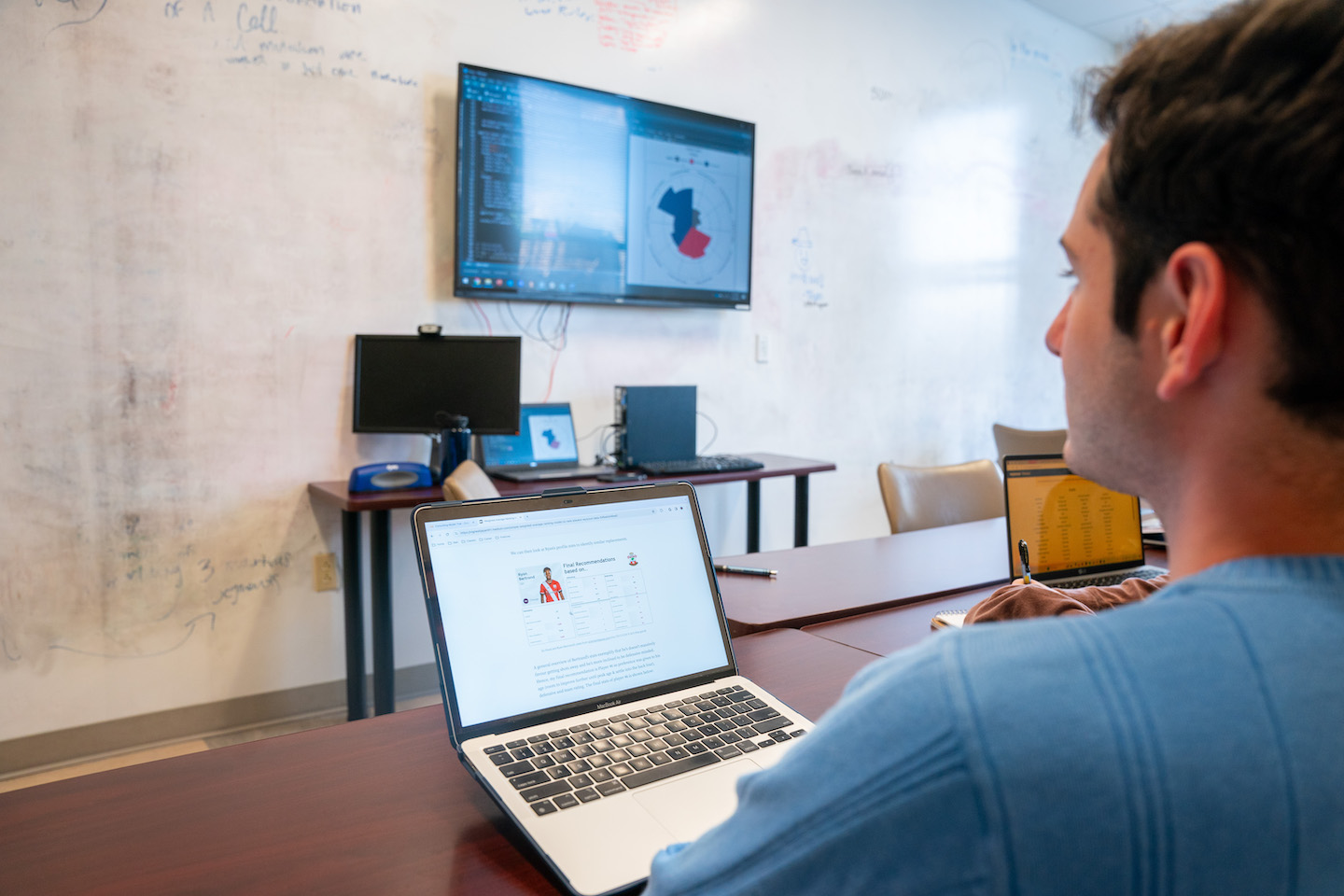 By spring break, the project started pulling in some preliminary results for Best to share with the coaches. The class will provide a final report to the coaches by the end of the semester and will present an overview of their findings at the annual Belmont University Research Symposium April 18.
By spring break, the project started pulling in some preliminary results for Best to share with the coaches. The class will provide a final report to the coaches by the end of the semester and will present an overview of their findings at the annual Belmont University Research Symposium April 18.
During recruitment, coaches have a short window of time to interpret whether players in the system are athletes they’d like to pursue.
The hope is that the class’s website will be operational by the end of April before an NCAA transfer window starts May 1. This first window should allow the staff to start trying it out, work out the kinks and be ready for their most important recruitment window starting in November.
Crawford said her biggest hope is that the class can provide something truly useful to the soccer team by the end of the project. “One of the coolest things about this course is that our hard work actually turns into something more than a grade in a computer. It has the potential to impact others,” she said. “And on a personal level, it would be amazing to leave a little part of me behind at Belmont that continues giving back even after I’m gone.”
With that idea comes a greater sense of responsibility, knowing it would be bad stewardship to give the soccer team a model that had severe bias in it.
Crawford concluded, “I hope that we’re able to not just create a model but create one that really does positively impact the Belmont soccer team... and maybe helps them lock down more W’s!”

